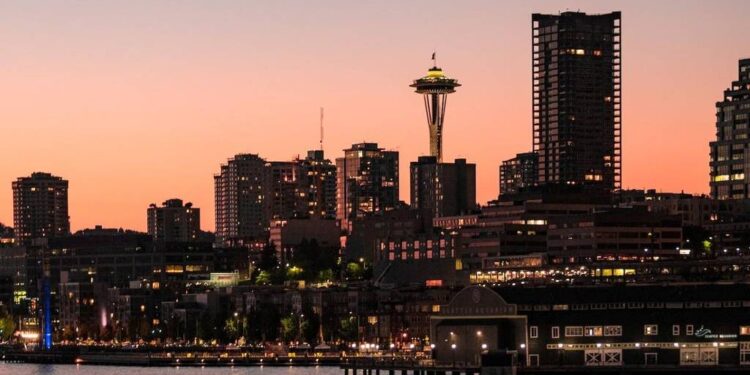Seattle residents have just one week remaining to enjoy 8 p.m. sunsets before the gradual shift toward autumn begins accelerating the loss of evening daylight that defines Pacific Northwest summers.
Next Thursday marks the last 8 p.m. sunset of the year, ending a period that began July 18 and provided nearly six weeks of extended evening light. The milestone represents more than an astronomical curiosity, marking a psychological transition that affects how residents experience their city and outdoor activities.
Western Washington will continue losing approximately three minutes of sunlight daily throughout the remainder of August and into September, a rate of change that becomes increasingly noticeable as summer activities compete with shortening days. The rapid daylight loss reflects Earth’s orbital mechanics that create the dramatic seasonal variations experienced at Seattle’s northern latitude.
This year’s sunset reached its latest point at 9:11 p.m. for seven consecutive days between June 22 and June 28, providing the peak of Seattle’s summer daylight experience. Those extended evening hours enable outdoor dining, recreational activities, and social gatherings that take advantage of the region’s mild summer climate and stunning natural setting.
Weather conditions through the remainder of this week are expected to cooperate with summer farewell activities, with temperatures forecast above 80 degrees and sunny skies. Saturday’s predicted high of 85 degrees, combined with nighttime temperatures around 60 degrees, offers ideal conditions for residents to enjoy the final week of 8 p.m. sunsets.
The National Weather Service explains that Earth’s axial tilt creates these seasonal daylight patterns, with the Northern Hemisphere tilting toward the sun during spring and summer months to produce longer days. As autumn approaches, the hemisphere begins tilting away from the sun, gradually shortening daylight hours until the winter solstice.
The approaching September equinox will bring nearly equal day and night periods across the globe as Earth’s tilt reaches a neutral position. For Seattle residents, this astronomical event marks the official transition to autumn and the beginning of the region’s characteristic fall and winter weather patterns.
For many Pacific Northwest residents, the loss of evening daylight represents one of summer’s most significant endings, affecting everything from commuting patterns to recreational activities. The psychological impact of shortened days often influences seasonal mood changes and outdoor activity planning as residents adapt to earlier darkness.
Seattle’s northern latitude, similar to that of northern France, creates more dramatic seasonal daylight variations than experienced in much of the United States. This geographic reality makes the transition from peak summer daylight to autumn particularly noticeable for residents and visitors accustomed to more gradual seasonal changes.







